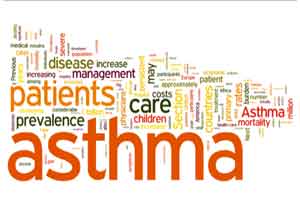- Home
- Editorial
- News
- Practice Guidelines
- Anesthesiology Guidelines
- Cancer Guidelines
- Cardiac Sciences Guidelines
- Critical Care Guidelines
- Dentistry Guidelines
- Dermatology Guidelines
- Diabetes and Endo Guidelines
- Diagnostics Guidelines
- ENT Guidelines
- Featured Practice Guidelines
- Gastroenterology Guidelines
- Geriatrics Guidelines
- Medicine Guidelines
- Nephrology Guidelines
- Neurosciences Guidelines
- Obs and Gynae Guidelines
- Ophthalmology Guidelines
- Orthopaedics Guidelines
- Paediatrics Guidelines
- Psychiatry Guidelines
- Pulmonology Guidelines
- Radiology Guidelines
- Surgery Guidelines
- Urology Guidelines
Dupilumab reduces exacerbation rates in asthma patients

Dupilumab significantly reduced severe exacerbation rates in patients with late-onset asthma with or without fixed airway obstruction, according to a recent study presented at the ATS (American Thoracic Society) 2019 International Conference. At weeks 12 and 52, the researchers observed improvements in lung function in patients with late-onset asthma and fixed airway obstruction -- who experience worse asthma outcomes than do those without fixed airway obstruction.
Dupilumab, a fully human VelocImmune-derived anti-interleukin (IL)-4 receptor α monoclonal antibody, inhibits signaling of IL-4 and IL-13, which are key drivers of type 2 inflammation. It is approved for the treatment of inadequately controlled, moderate-to-severe atopic dermatitis and, in the USA, for patients aged ≥12 years with moderate-to-severe eosinophilic or corticosteroid-dependent asthma.
This post hoc analysis assessed the efficacy of dupilumab in patients with late onset of asthma (age >40 years) and baseline post-bronchodilator FEV1/forced vital capacity [FVC] ratio <0.7 (which suggests fixed airway obstruction) or ≥0.7.
The researchers analyzed the annualized rate of severe exacerbations during the 52-week treatment period using negative binomial regression models. Change from baseline in pre- and post-bronchodilator FEV1 (L) and pre-bronchodilator FEV1/FVC ratio at Weeks 12 and 52 were analyzed using mixed-effects models with repeated measures.
Key findings of the study include:
- Dupilumab 200mg and 300mg q2w vs placebo significantly reduced the annualized rate of severe exacerbations in patients with late-onset asthma and fixed airway obstruction (─68.8% and ─75.7%, respectively) and in patients without fixed airway obstruction (─55.1% and ─50.7%, respectively).
- At Week 12, pre- and post-bronchodilator FEV1 and FEV1/FVC ratio improved in dupilumab-treated patients with late-onset asthma and fixed airway obstruction; similar improvements were observed at Week 52 (dupilumab 200mg q2w P<0.05 for pre- and post-bronchodilator FEV1; dupilumab 300mg q2w pre-bronchodilator FEV1, post-bronchodilator FEV1).
- Late-onset asthma patients without fixed airway obstruction had more modest improvements vs placebo in pre-bronchodilator FEV1 at Weeks 12 and 52 than did those with fixed airway obstruction.
- The most frequent adverse event in dupilumab-treated groups vs matched-placebo was injection-site reactions (15%/18% vs 5%/10%, respectively).

Disclaimer: This site is primarily intended for healthcare professionals. Any content/information on this website does not replace the advice of medical and/or health professionals and should not be construed as medical/diagnostic advice/endorsement or prescription. Use of this site is subject to our terms of use, privacy policy, advertisement policy. © 2020 Minerva Medical Treatment Pvt Ltd